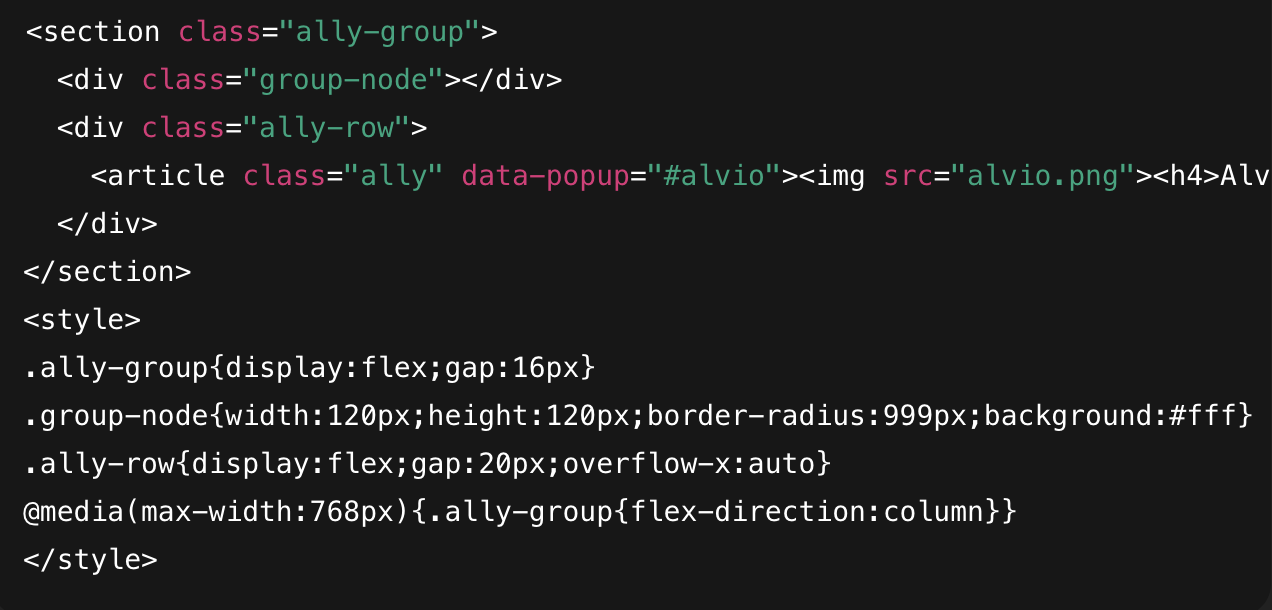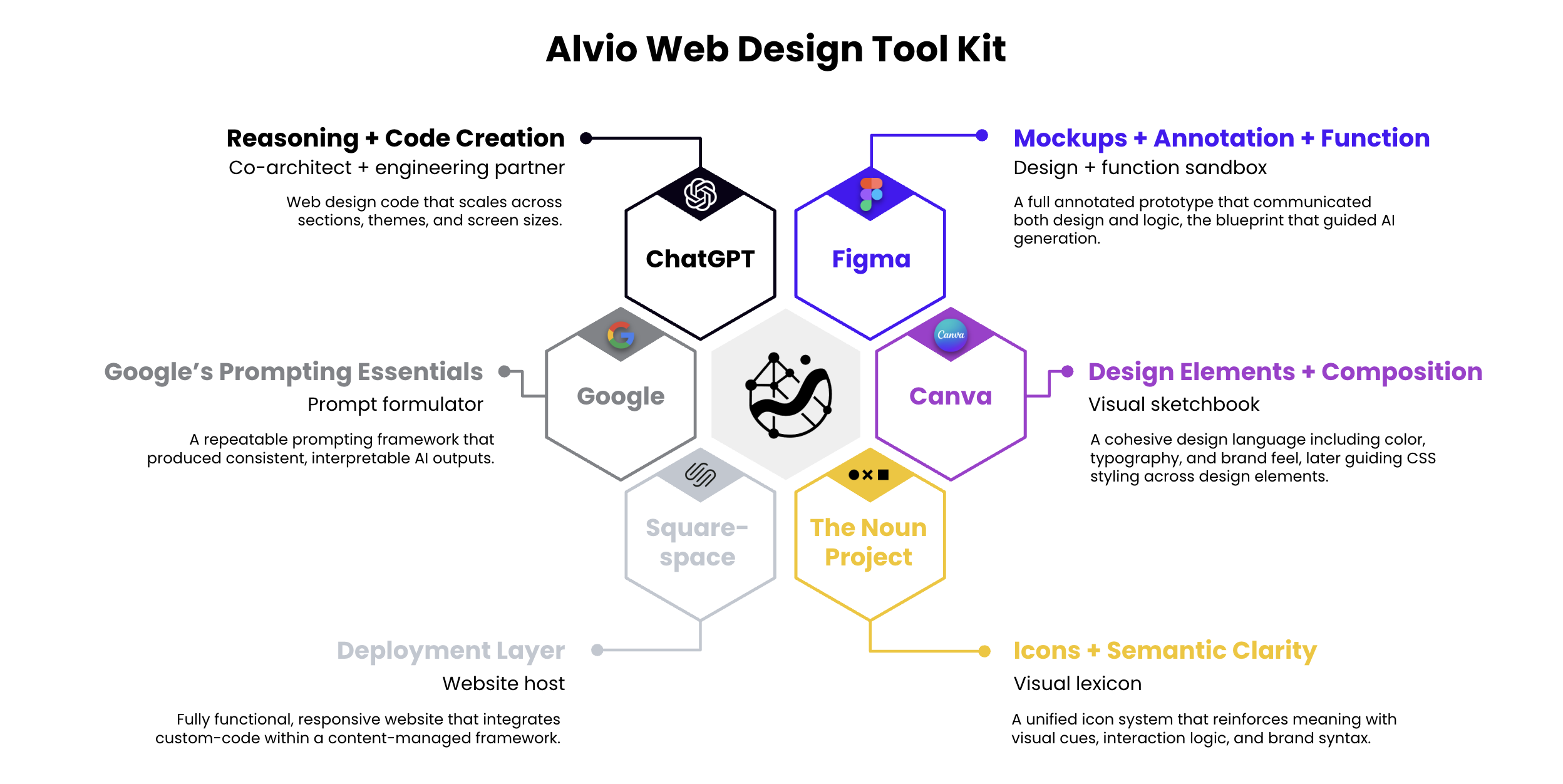Alvio Tech Stack For Site Redesign
When I began my website redesign, I set out to explore what happens when curiosity meets capability. Could AI help me build something that wasn’t just functional, but expressive, a website that reflected how I think, work, and tell stories?
There are countless things that spark my interest. My backlog of hobbies alone could fill a lifetime. But curiosity often comes with a bottleneck: learning things takes time, and sometimes I lack the deep technical fluency to build what I pictured.
What I love most about AI is how it erases that boundary. It lowers the barrier to new skills and gives me just enough scaffolding to move from knowing what I want to do to actually creating it. This piece is a reflection on that process: how reasoning with AI reshapes what we build, and what we believe we’re capable of creating.
What was the tech stack?
Every system has its stack. Alvio’s site was no different. Each tool played a specific role in translating thought into form. Some structured the creative process, others extended my technical reach. Together, they formed a toolkit that shaped how I built, learned, and designed across the entire site.
How to use them in concert?
Each tool played its part, but the real shift happened in how they connected. Using AI wasn’t just about acceleration or automation. It became a new way of reasoning, a design process built on conversation, iteration, and shared structure.
I moved between design, prompts, and code as part of one workflow. Figma defined structure, Canva set visual tone, and ChatGPT turned both into logic and interaction. The result was a chain where every tool informed the next.

ChatGPT
What I used it for
Every component began as a structured conversation. I used it to write and refine HTML, CSS, and JavaScript, and to reason through structure across pages.
Example
Prompt: "Create a three-row group layout for Alvio Allies. Left column is group node, right is horizontal row of ally nodes. Each ally will have an character image, description, and embedded content."
Outcome
Cohesive, modular code that scales across pages with unified design, adaptive layouts, and reusable components.


Figma
What I used it for
Exploring layout and interaction. I mapped component relationships, annotated behaviors, and visualized transitions before handing structure to AI.
Example

Outcome
An annotated blueprint that connected visual design to system logic and acted as a reasoning anchor for code generation.


Canva
What I used it for
Where concepts found form. I prototyped typography, color balance, element design, and composition before codifying them.
Example

Outcome
A cohesive visual language for Alvio that later guided CSS styling and motion tone across sections.


The Noun Project
What I used it for
Sourcing and customizing icons to create a unified symbolic system for click cues, timeline nodes, and feature badges.
Example
.ally-badge{
position:absolute; top:4px; left:4px;
width:28px; height:28px; border-radius:50%;
background-color:currentColor; display:flex;}
Outcome
Consistent iconography that reinforces interaction logic and brand syntax.


Squarespace
What I used it for
Hosting and deployment. I integrated custom HTML, CSS, and JavaScript into a managed content framework and iterated in real time.
Example
<div class="ally-node" onclick="showPopup('Alvio','...','IMG','BADGE','theme-purple',this)">
<div class="node-img-wrapper">
<img src="ALVIO_IMAGE" alt="Alvio" />
<div class="ally-badge"
Outcome
A functional, scalable site that merges handcrafted mockups into components with CMS flexibility, and clean css, html, and javascript.


Google’s Prompting Essentials
What I used it for
Applied principles of context depth, role framing, and constraints to structure every AI dialogue. Each prompt read like a research brief.
Example

Outcome
A repeatable prompting framework that produced coherent, interpretable, and reusable outputs across code, copy, and layout.
Context: Allies page with groups and popups Role: You are my front-end pair Task: Build responsive group-row with ally nodes and popup card Constraints: no fixed heights, 600px popup max, 95vw on mobile
How to craft effective prompts?
Most people think prompting is about adding more words. In practice it is about adding more structure. The strongest prompts I wrote for my webpages shared three traits: clear context, clear intent, and clear constraints.
Good prompting does not force a model to guess. It gives the model enough structure to reason. To keep the model aligned, I treated every prompt like a small specification. This became a repeatable formula that worked across design, code, layout, and debugging.
Here is the formula I used across the entire site. This pattern comes directly from Google’s Prompting Essentials Course, adapted to design and front-end development.
How to adapt and scale your prompts.
Different parts of the site required different types of inputs and different ways of guiding ChatGPT.
Some prompts defined structure. Some paired text with screenshots. Others worked as step by step chains that carried reasoning forward.
The effectiveness came from choosing the right prompting method for the task, not from using longer or more complex instructions.
The following guide shows the six prompting modes I used across the Alvio site, with examples taken from the Allies, Experience, Playbooks, and Approach pages.
Closing thoughts.
In building this, I learned that AI mirrors your mental model. The clearer your ontology, your structure of meaning, the clearer its reasoning becomes. Prompting is design. Debugging is learning. And systems thinking is the bridge between them.
‘Til next time, I’m Bianca


